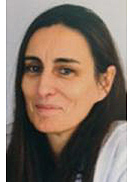The IFCT-0302 study questions the role CT-scan play in post-surgery follow-up of patients with completely resected non-small cell lung cancer
Several international treatment guidelines recommend a follow-up based on clinic visits and chest computed tomography (CT)-scans for completely resected non-small cell lung cancer (NSCLC). Results of the phase III IFCT-0302 study question this as the trial did not show a difference in overall survival (OS) between patients who received CT-scans as part of their follow-up, and those who did not.
The IFCT-0302 study is a randomized multicenter study which compared 2 follow-up programs for completely resected stage pI, II, IIIA and T4 (pulmonary nodules in the same lobe) N0-2 NSCLC (TNM 6th edition). The multicentre study included 1775 patients who completed follow-up visits every 6 months for the first 2 years, and yearly until 5 years. Patients were randomised to a control follow-up, that included clinical examination and chest X-ray (CXR), or an experimental follow-up that included the control protocol with the addition of thoraco-abdominal CT-scan plus bronchoscopy (optional for adenocarcinomas). Supplementary procedures were allowed in case of symptoms. The primary endpoint was OS. The patient characteristics were well balanced between the 3 arms in the study. The median age in the study was 63 years, 76.3% of patients was male, 39.5% had squamous and large cell carcinomas, 68.1% had stage I disease (stage II 13.7%, stage III 18.3%), 86.6% underwent a lobectomy or bilobectomy, 8.7% received pre- and/or post-operative radiotherapy and 45% was treated with pre- and/or post-operative chemotherapy. After a median follow-up of 8 years and 10 months, the OS was not significantly different between the groups (HR[95%CI]: 0.95[0.82-1.09]; p= 0.37) at a median of 99.7 months in the control arm and 123.6 months in the experimental arm. Also the 3-year disease-free survival (DFS) rates were similar, at 63.3% and 60.2% respectively. The 8-year OS rates were similar at 51.7% and 54.6%, respectively.
Although the study did not demonstrate a significant benefit with CT-based follow-up, the trend towards better survival in the CT arm suggests that longer follow-up may eventually reveal a benefit of this approach. As such, the investigators said that a conservative point of view would be to do a yearly CT-scan, which might be of interest over the long-term, however, doing regular scans every 6 months may be of no value in the first 2 post-operative years.
Reference
Westeel V, F. Barlesi F, Foucher P, et al. Results of the phase III IFCT-0302 trial assessing minimal versus CT-scan based follow-up for completely resected non-small cell lung cancer (NSCLC). Presented at ESMO 2017, abstract 1273O.


